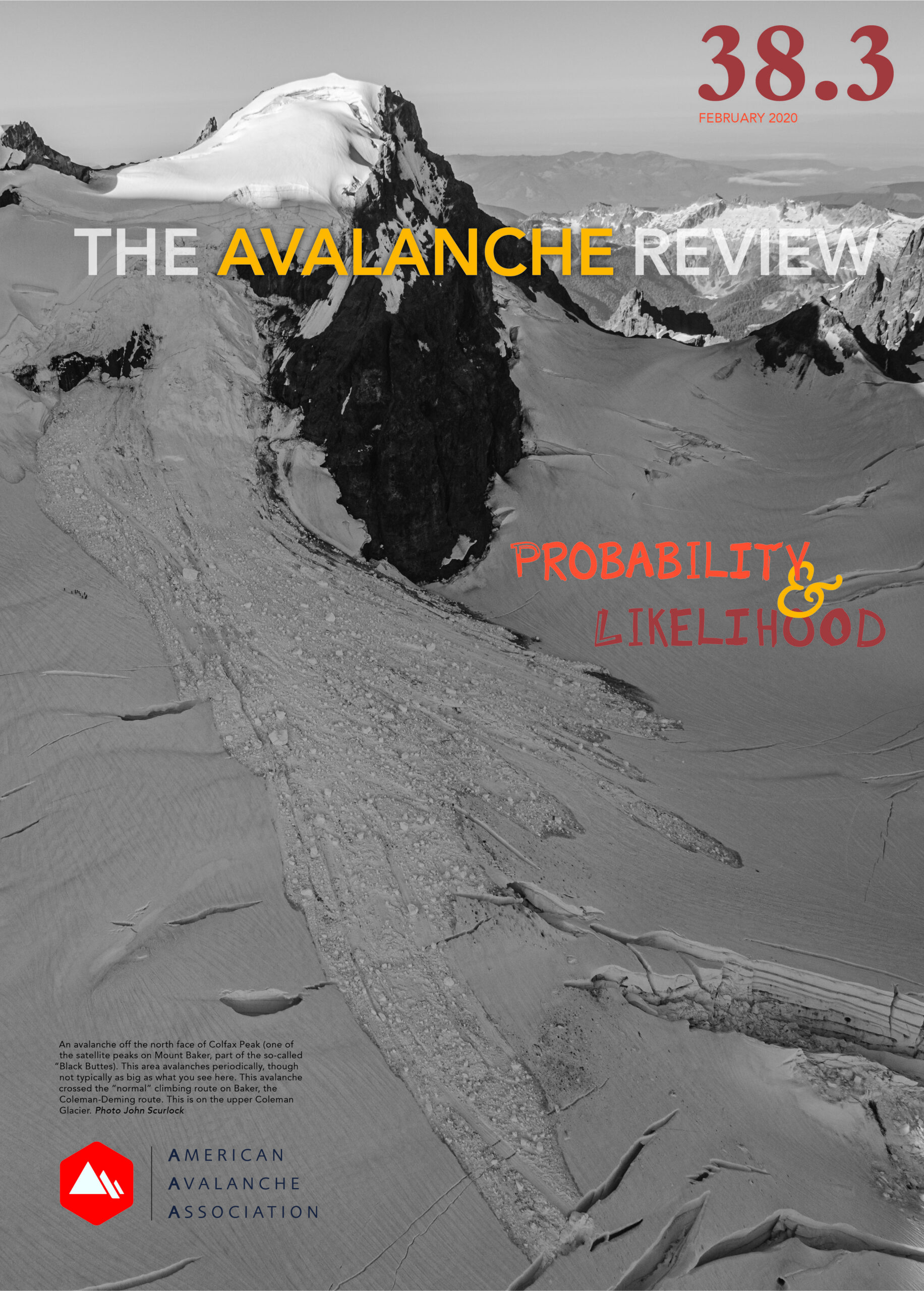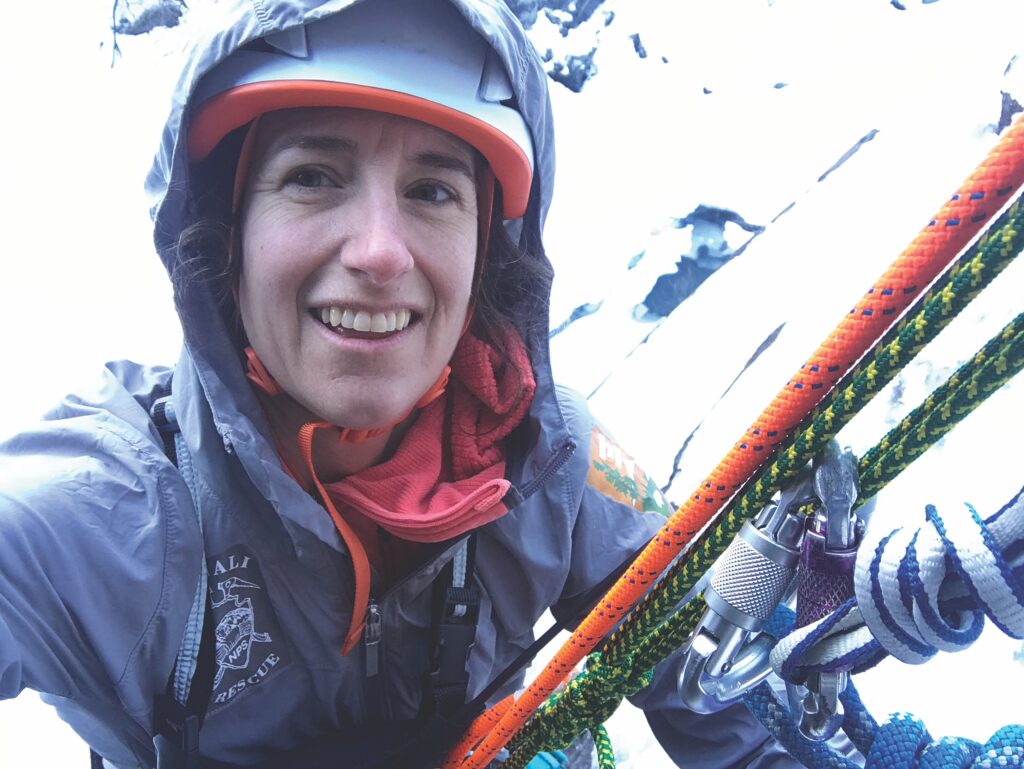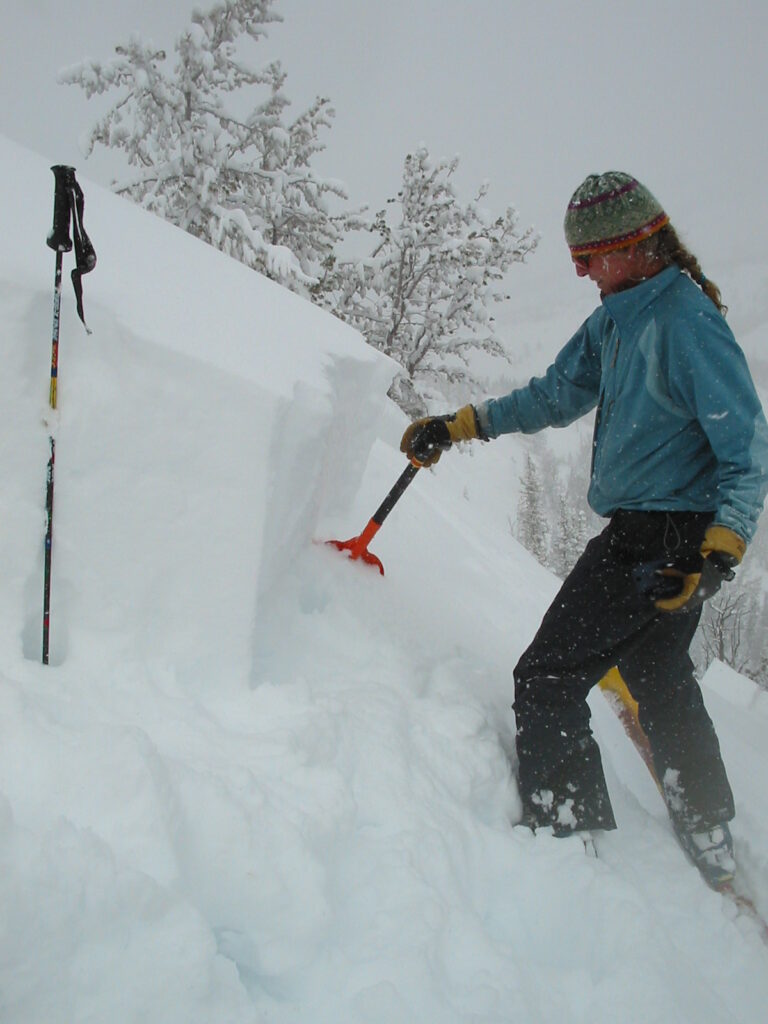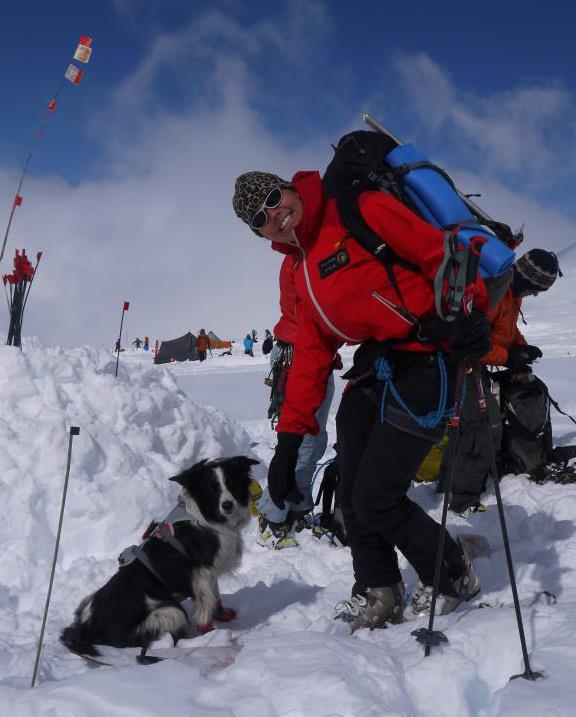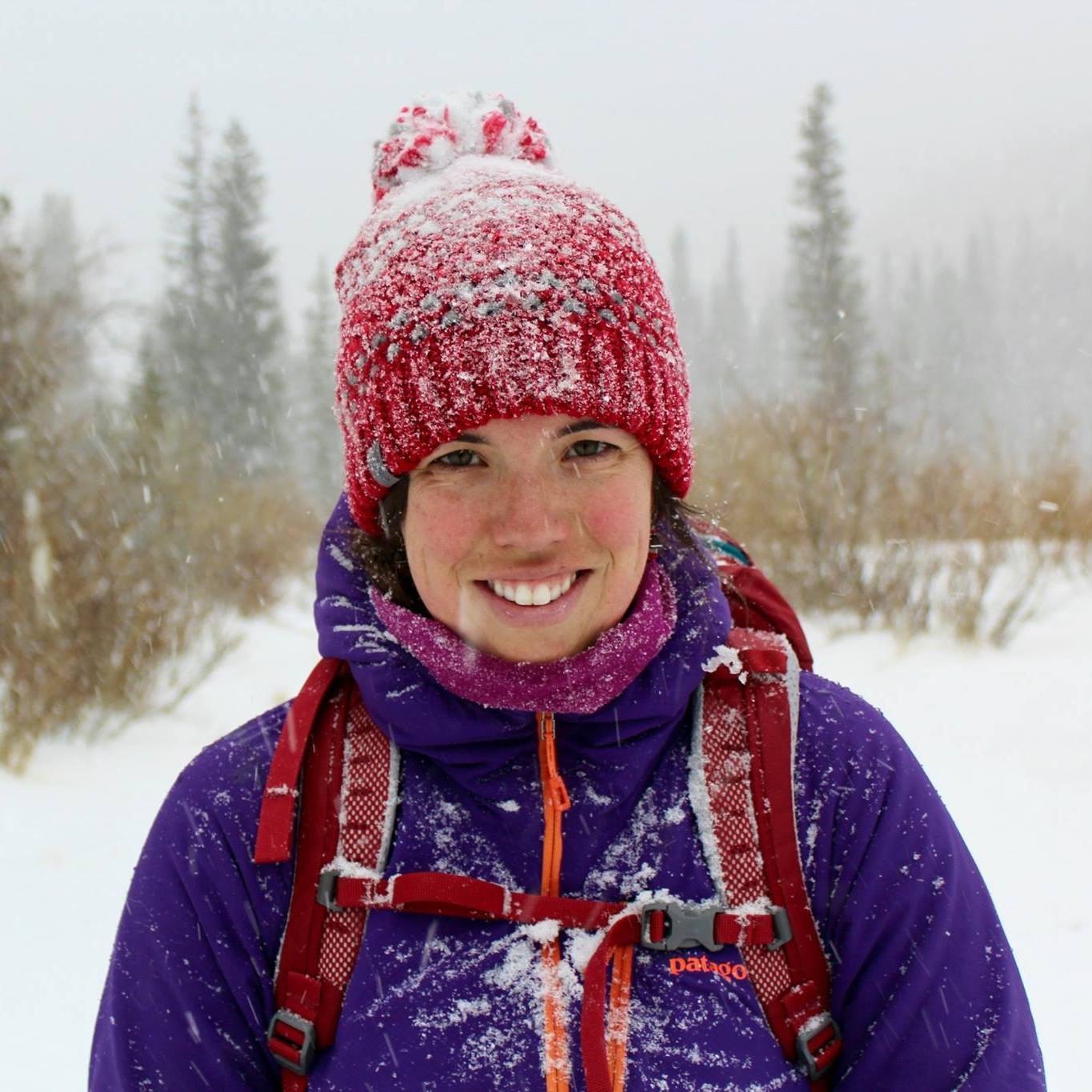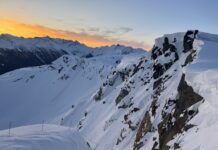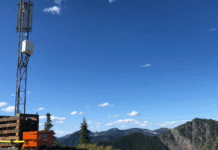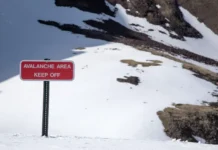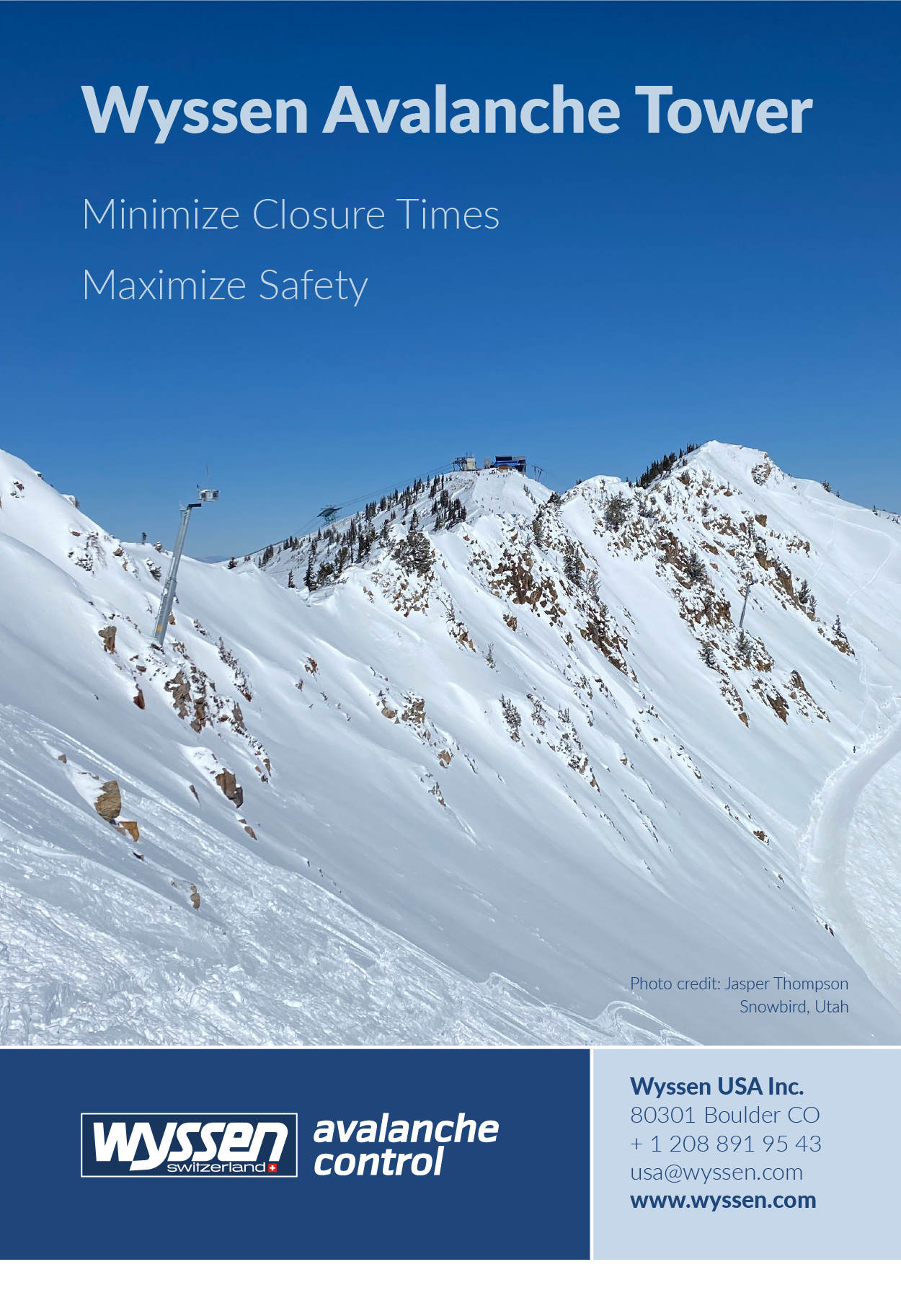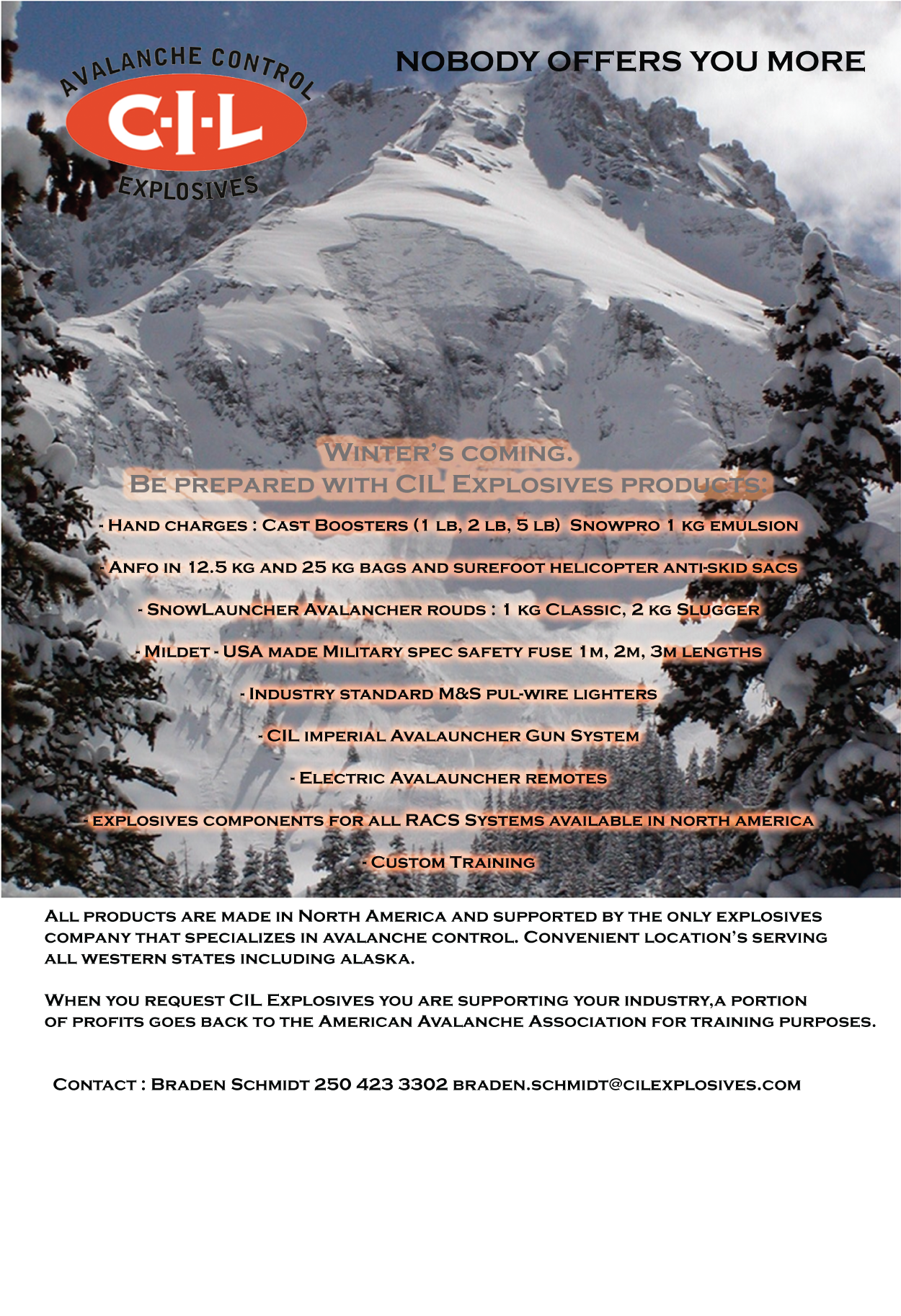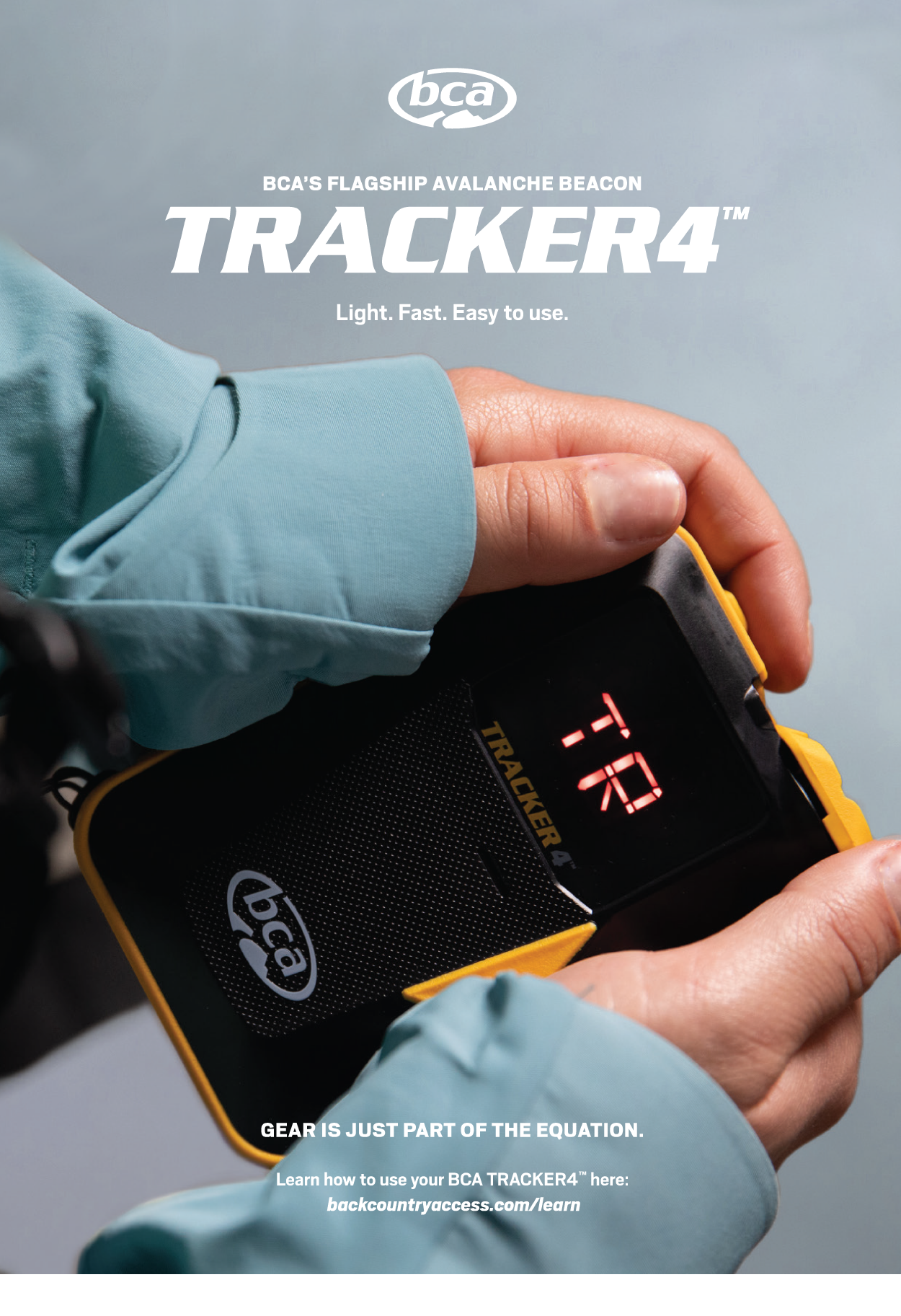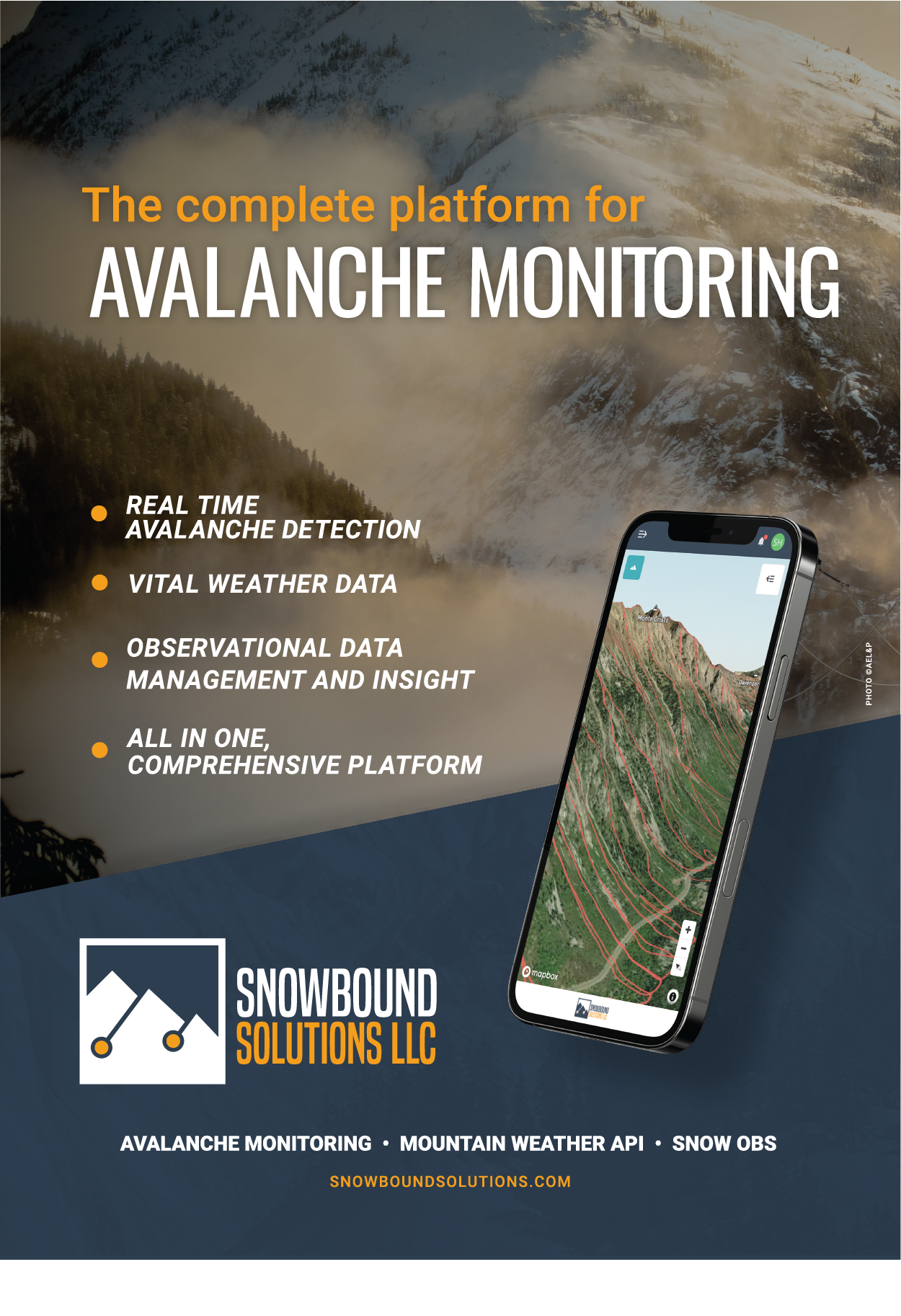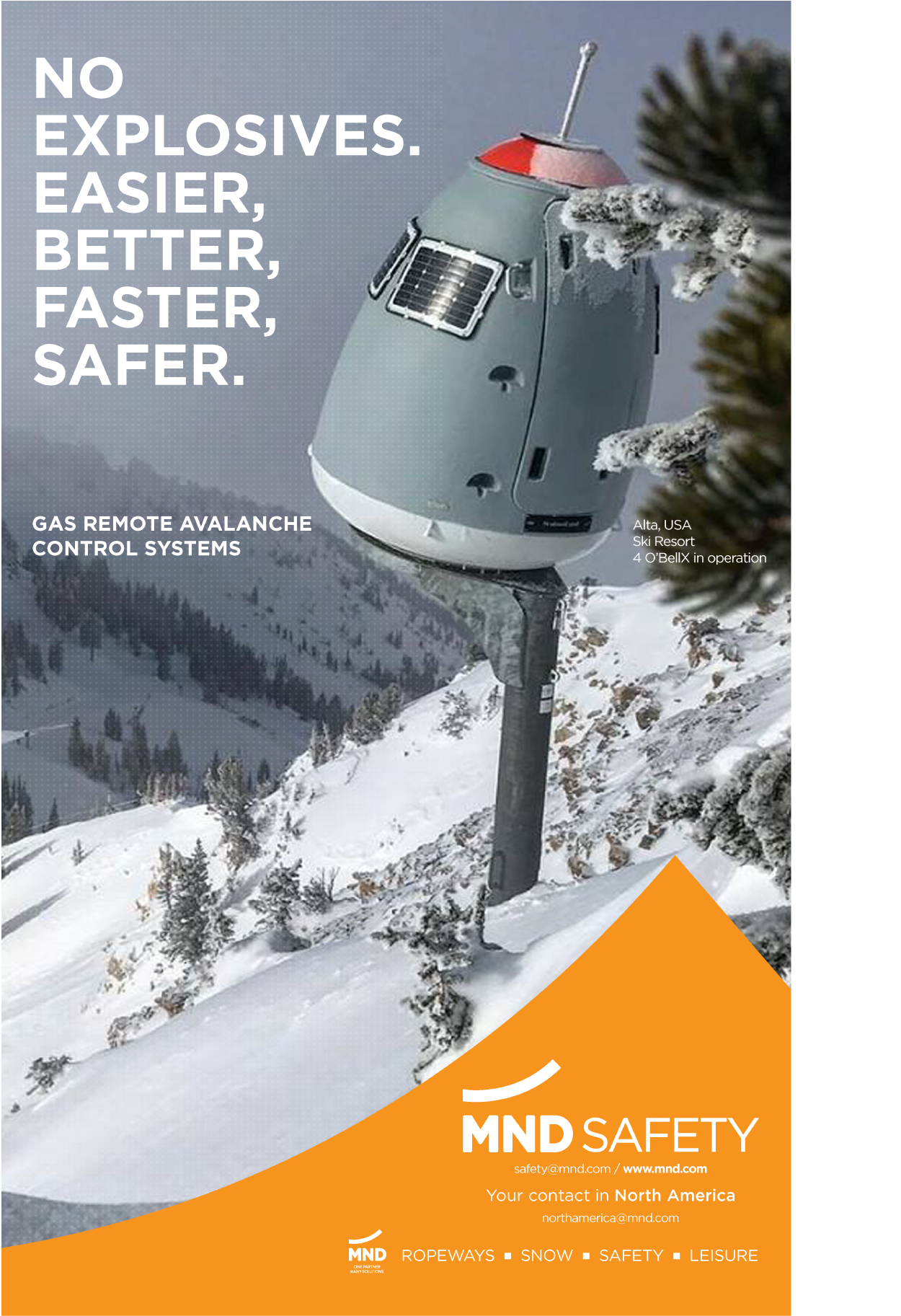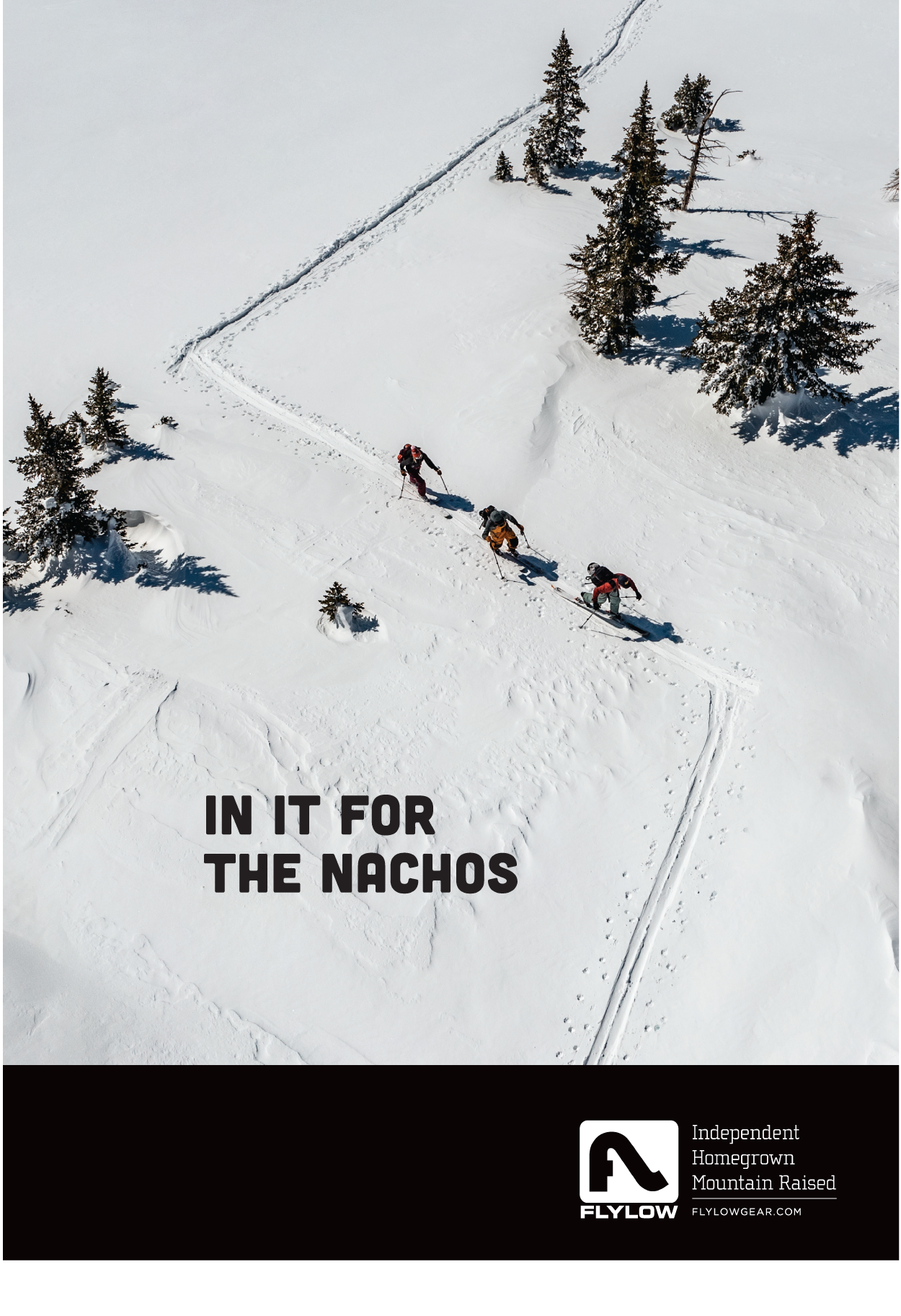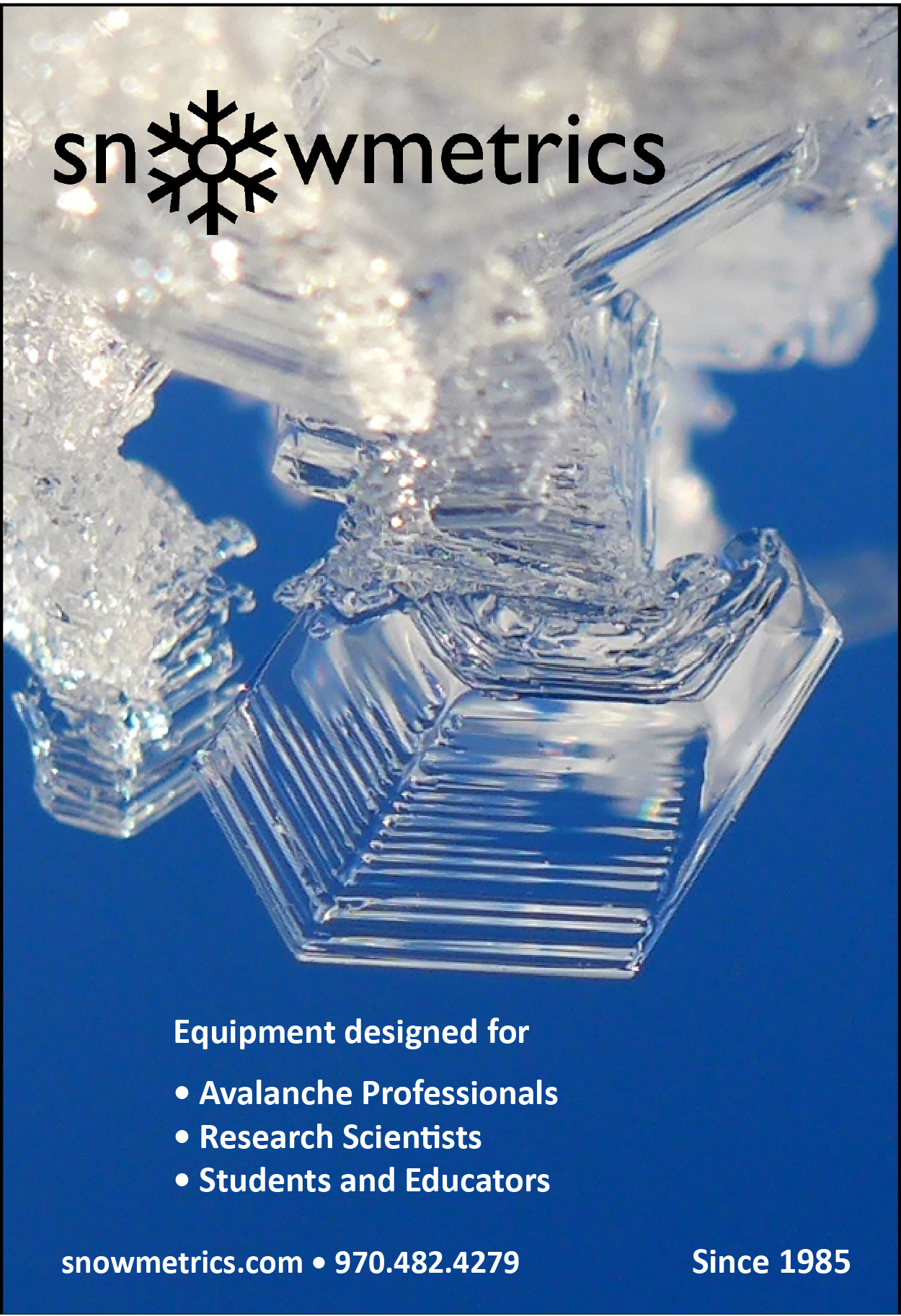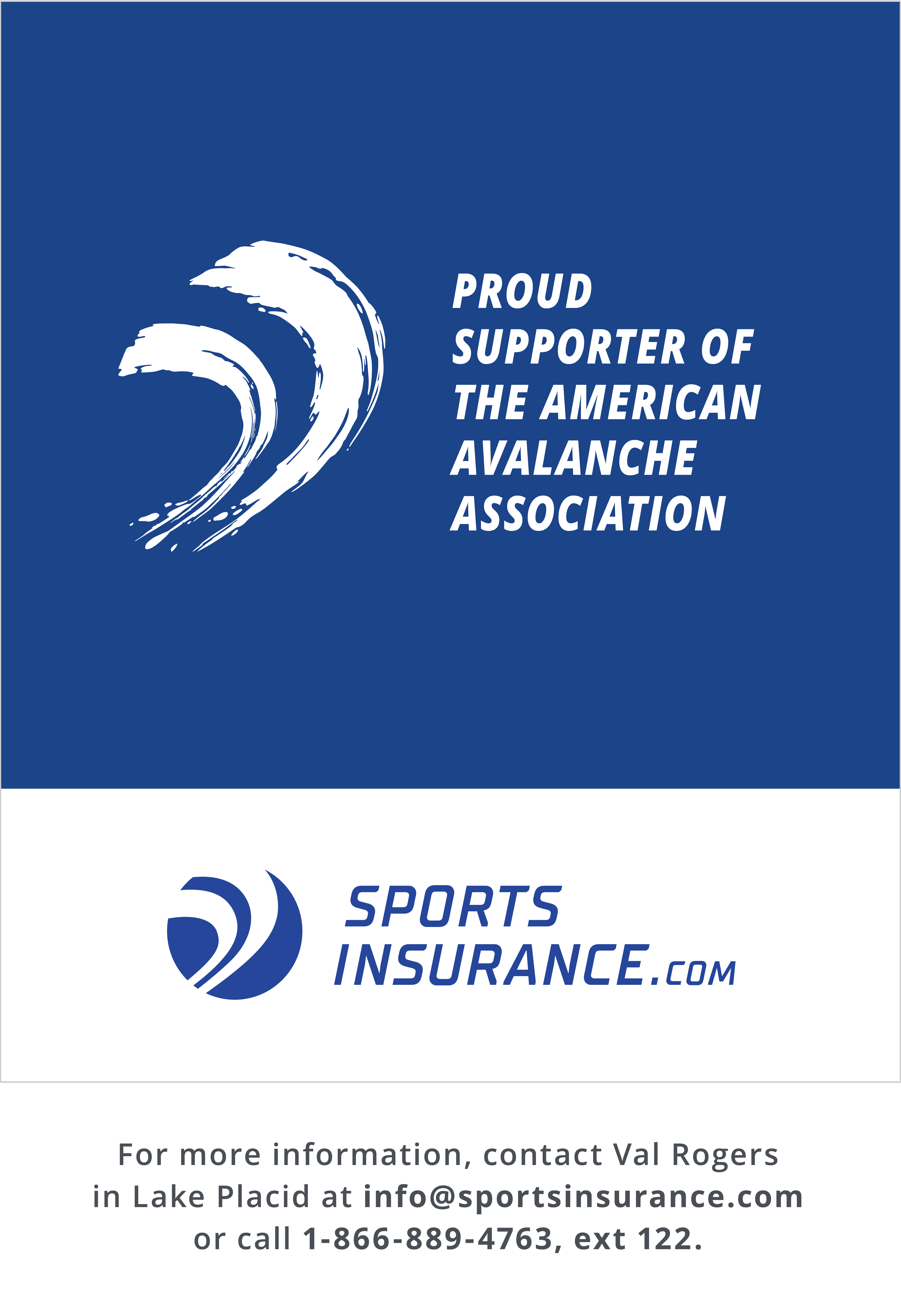By Emma Walker
How can we diversify our membership? The outdoor industry has been asking itself this question lately, and subsequently has come up with a number of thoughtful answers. A3 is doing the same thing: Our membership is predominantly white and male, and lately we’ve been examining what it takes to make our organization more engaging to a wider set of potential members.
Halsted Morris moved this conversation forward back in October [2019] when he initiated a conversation about inclusion among the A3 board members. Halsted’s primary sentiment was this: “Simply put, I would like more women to join and be a part of A3. When they do join, I would like them to feel the respect they deserve,” he wrote. “A3 can be the tool for women to feel dignity in the avalanche business.” He then issued both a challenge and a welcome in his “from the President” columns in TAR 38.1 and 38.2.
Here in the avalanche world, we’re fortunate that we have a number of female role models to look up to. (Especially in Alaska, as you’ll notice in this issue. Is there something in the water—or the snowpack—up there?) We thought that understanding what makes them tick might shed some light on how we can diversify our ranks.
So Lynne Wolfe came to town, and in my cozy Boise living room, we volleyed questions back and forth: What did we want these women to tell us? What did we want newcomers to our field to know? We also asked aspiring snow scientists what they wanted to hear. Their questions are reflected in the interviews you’ll read here.
Armed with interview questions we couldn’t wait to learn the answers to, we reached out to women who’ve been working in our field for decades as forecasters, educators, and guides. Lynne and I each had the privilege of asking these questions of our own mentors—Janet Kellam and Eeva Latosuo, respectively—and their answers continued to inspire us. We hope you learn as much as we did from these pillars of the avalanche community.
Melis Coady
Executive Director, Alaska Avalanche School • Anchorage, Alaska
Melis Coady’s wide-ranging educational career spans two decades, during which she’s worked as a field instructor for NOLS and the Wilderness Medicine Institute, a senior guide for the Alaska Mountaineering School, and as a climbing ranger in Denali National Park. Melis has skied and climbed on all seven continents, and has served as the Executive Director of the Alaska Avalanche School since 2016.
TAR: What advice would you give your 20-year-old self?
MC: When I was 20, I thought losing youthful boldness was death. I didn’t yet know that youthful boldness was, in fact, a recipe for death. At twenty, I never would have believed I would be more skilled (and more fun to be around) with age. Unfortunately, you can’t fast forward––you have to bumble your way through your twenties to be rewarded in your 30s, 40s, and hopefully beyond. I’m dying to know what my 60-year-old self would tell my 42-year-old self.
What was your first job in the avalanche industry? How did you get your start?
Here is the scary thing: It took me an incredibly long time to understand I had a job in the avalanche industry. In the late 1990s, I self-identified as a climber and mountaineering guide. Working in Alaska, we almost never wore beacons; the thinking was that if you gave cornices and seracs a wide berth, you’d probably be okay. We also thought that if you waited 24 hours after a storm for snow slopes to either stabilize or shed, you were probably good to go. (I’d say that is still a stigma the climbing industry has to overcome.)
It’s still very common for climbers to travel without basic avalanche safety gear, and many lack basic avalanche education. Sometimes it feels like the ski industry can take all the air out of the room. My motivation in directing Alaska Avalanche School is to expand the reach of avalanche education. I believe climbers, splitboarders, and motorized users are recreating with outsized risk. First, their own sport cultures need to demand common safety standards from each other. And as educators, we need to include photos, language, and scenarios that apply to diverse audiences.
How have you seen the industry change since?
It is so nice to see professionals more openly sharing their mistakes. This year, presenters at both USAW and SAAW were so vulnerable about lessons learned. Forecasters Heather Thamm and Drew Hardesty dissected their public forecasts for days when the hazard rating was low but the public was triggering avalanches. Guides Ken Wylie and Pete Earle shared take-aways from free and expensive lessons in the mountains. The Snowy Torrents and Accidents in North American Climbing have been great resources, but a first-person account of an incident is amazingly powerful.
Who were your mentors? How did they challenge you?
My mentors were a large body of out of shape, judgmental, and chauvinistic men. I worked as a mountain guide on Denali for 15 years. There, many of my mid-life crisis clients had convinced themselves that seeking youthfulness meant cheating on their wives, buying a sports car, or climbing a big mountain. I found early in my career they treated me poorly—and they taught me valuable lessons about how best to connect with and earn the respect of people very different than myself. At the outset, it felt like we had diametrically opposed definitions of success. It turns out we had the same definition. Success looks like developing a depth of knowledge in a difficult field, drawing on diverse leadership styles, deploying strategic decision-making, and having the discipline to stay the course with an unflappable work ethic.
What’s the most useful feedback you’ve ever gotten?
Not to flirt. It makes other women hate you and it will erode your professional relationships with men.
Describe a time you made a bad decision and got away with it—a time you got lucky. What did you learn?
I used to be a Luddite. I was the last of my friends to get a digital beacon and a smartphone. That all changed in 2012 on Denali. I was returning from the summit with a large group, and we got caught in a whiteout. I had brought and placed over 100 bamboo wands, each spaced at the distance of a rope length, so we wouldn’t get lost. Now, the wands were covered in rime ice, and we couldn’t find any of them. I was stressed. Caring for a large group in a storm overnight at high altitude with only basic survival gear is my biggest professional nightmare, and it seemed to be coming true.
Luckily, with the use of a radio and another group with a GPS, we were able to get our team safely back to high camp. The descent took us longer than the ascent—it was an unacceptable amount of time to be out of camp in those conditions. I learned that it’s important to embrace new technologies and make them redundant with old technologies.
Say you’re working in the field, and a colleague you respect proposes taking a run you don’t think is appropriate, given the conditions. How would you respond?
I guess it depends which colleague. It’s easier to work things out with some personalities than others. Luckily, there are very few people I’ve worked with professionally that would be hard to work out a routefinding disagreement with.
How would you describe your communication and leadership styles?
I communicate assertively and try to be a transformational leader. I enjoy sharing a vision with a team and working towards it collaboratively.
Would you say those traits are typically described as “masculine” or “feminine”?
A good leader—regardless of gender—needs to dip in the well of both masculine and feminine leadership styles. If you get too anchored into one style, you’ll limit the effectiveness of your leadership. In parenting, they call it “good cop” and “bad cop.” You have to be compassionate and firm. In working with groups of men, it’s always felt a bit uncomfortable when I’ve put in situations where I had to put on the “head coach” routine and use very direct and decisive language—but it works.
Have your leadership and communication styles changed over time?
I hope so! Perhaps that’s my greatest fear: getting stuck and not growing or improving. Today, I am more aware of reading body language and paying attention to people’s actions. I anchor less to what people say. Likewise, I try to role model my leadership more with my behaviors over words.
How can newcomers to the field build sustainable avalanche careers? Have you done that?
I think in order to have a sustainable career, you have to balance the fun and adventure of being outside in the snow with the professional expectation that you will keep up your skills with continued learning and professional documentation. I think people try to typecast themselves––“I’m terrible with computers” or “I don’t deserve to go out until I finish this project.” Neither is sustainable.
How do you fuel yourself when you’re not thinking about snow?
I think about warm granite.
Janet Kellam
Retired • Ketchum, Idaho
After a college ski racing career, Janet Kellam made her way to Idaho in the 1970s and began her avalanche career in 1981. She served as the Lead Forecaster for the Sawtooth National Forest Avalanche Center from 1996 to 2001, and as its Director from then until 2010. Janet also worked as a National Avalanche School instructor. She recently retired and is spending her newfound spare time with her husband, Andy, and her new Toller Retriever puppy, Toby.
TAR: What advice would you give your 20-year-old self?
JK: Remember that you will unconsciously be influenced by your perception of the snowpack that was under your feet yesterday. No matter where you are, force yourself to look at the snowpack today with new eyes. Catch yourself when you make assumptions.
What was your first job in the avalanche industry? How did you get your start?
My first job was as a licensed backcountry ski guide in 1981. I was very fortunate in the late 1970s to fall in with the likes of Alan Bard, Tom Carter, and Ned Gilette. Exploring the old CCC trails off of Mount Mansfield on three pins quickly morphed into skiing the backcountry of my stomping grounds around Ketchum and Stanley.
It quickly became apparent that learning about snow and avalanches was critical to navigate safely. In our group, being aware and self-sufficient was part of the culture. It was fascinating to discover that snow was not just about how to wax your skis. I was able to attend— and even assist on—some avalanche courses with Peter Lev, Rod Newcomb, David Beck, Ed LaChapelle, Don Bachman, and Chris Landry. I quickly discovered how little I knew about snow, and how much I was eager to learn. In my early 20s, I didn’t yet know that I had a lifetime ahead working in this community of snow and avalanche professionals.
How have you seen the industry change since?
The industry has changed significantly since the 1970s and early 80s. We’ve grown from a fledgling knowledge of avalanche science and mitigation applications into a very diverse field of skilled professionals. From the early days of pattern recognition and learning by trial-and-error when a pro wore many hats, the industry has developed into diverse specialties. There are stand-alone programs like forecasting for ski areas, highways, and the backcountry. There are diverse prevention and mitigation tools and methods, we have advanced mapping and engineering, and we see different branches of education, and even college degrees in snow science. We can utilize more effective and safer instability tests to help us follow the conditions.
Technology provides much better data collection and analysis, and this has allowed the development of systems that work pretty well for us. But there is always room for improvement. Sometimes technology can work against us when we get too immersed in the details and forget the big picture. We can try to cut it too close, counting on technology to make our final decision in spite of strong, basic evidence for avalanche conditions. In spite of all our industry progress, ongoing research continues to ask questions, seek answers, and remind us we don’t have a full understanding of snow and avalanches.
Who were your mentors? How did they challenge you?
I was very fortunate to spend time with a number of remarkable avalanche pros. I will never be able to thank each of them enough for their graciousness and wisdom they shared with me: Chris Landry, Doug Abromeit, Karl Birkeland, Ian McCammon, Chris Stethem, Knox Williams, Doug Fesler, Jill Fredston, Bruce Tremper, Paul Baugher, and Butch Harper. There are others, and they have all been amazing.
My mentors all put me in working positions or asked me to do something that I felt I wasn’t qualified for felt over my head. In spite of some sleepless nights and anxious moments, I did fine and I learned and grew through each of those experiences. I might not have accepted or applied myself to a number of situations without some avalanche pros believing in me.
Describe a time you made a bad decision and got away with it—a time you got lucky. What did you learn?
Our most powerful learning comes from making mistakes, and in the world of avalanches this often means our own close calls or accidents. We’ve all made some bad decisions and had nothing bad happen—so we may never truly register how close we came to a terrible accident or loss. Inevitably, in our profession, the “other” type of day comes. I do believe there is a greater awareness among avalanche pros as we have shifted from a tough-it-out cowboy mentality to really listening to others’ difficult experiences. There is nothing as powerful as a personal loss, but I believe sometimes we can learn from others and not have to suffer the same tragedies.
Over many decades, I’ve had three very serious near-misses by being caught in or nearly obliterated by avalanches. Fortunately, I have escaped injury or any terrible loss from those events.
The first time I was quite young. I was skiing off of Galena Summit. I made several mistakes. First, I didn’t like the early season conditions or the steepness of the slope we were headed for—but I didn’t speak up. We dug a pit and examined the faceted early-season snow, and when everyone else seemed to think it was okay, I was suckered into thinking the same thing.
The next mistake was skiing with some people that I hadn’t toured with. I assumed we all had the same interpretation of what “one at a time” and stopping in “safe spots” meant. We had talked about how to ski the slope, but the actions of two group members led to three out of four people being caught in a large slide. Some of us lost gear, but no one was hurt or even fully buried. So we went through the motions of good protocol and understanding the snowpack and terrain, but we failed horribly at all of it. My take-away: Communicate, communicate, communicate. Do not make assumptions and look at the big picture. Be honest about what the data is telling you, no matter what your goal is.
My second close call happened about ten years later. I was slow on the draw to say I didn’t like the conditions. I ultimately voiced my perspective halfway up a remote island off the Antarctic Peninsula. This was before satellite phones—we had a marine/air net radio and food for a month, but the rest of our expedition was days away. Our only rescue would be a passing Chilean freighter, if we were lucky.
So my party of two decided to turn around. As we downclimbed, a serac cut loose high above, bringing down a large wet slide. It barely missed us. By sheer luck, we were in the one protected section of a long, exposed gully. Volkswagen-sized ice blocks cascaded only a few feet beside us as wet slush poured over the rocks, scouring the gully and slope below, leaving debris 20 feet deep in the runout. I was nauseated at the reality of what might have happened.
We did communicate about conditions and made a good decision to retreat—but we should never have been there in the first place. The take-away from this close call, again, was not to make assumptions, and to be honest about the data, no matter what your goal is.
Ten years later, I had my third near-miss. While working as an avalanche forecaster at the Sawtooth Avalanche Center, I was fully buried in an avalanche eleven miles from the trailhead. I survived because of my two partners, and because in spite of relatively low avalanche danger, we never stopped using professional protocols and communication.
We carefully examined and tested the snowpack in multiple spots, chose cautious routes, and traveled one at a time to a safe spot, all while closely watching each other. At the time, I was four years into my forecasting job. I was more comfortable and confident about evaluating the snowpack and terrain, and I knew that put me at greater risk to make a poor decision.
That day, while snowmobilers were highmarking on the peaks nearby and heliskiers were skiing very similar terrain the next drainage over, we encountered an isolated windloaded slope that shattered like a pane of glass. We traversed low on the slope, one at a time in the same track. I was last. We thought we were skirting the windslab, but we weren’t—we’d crossed the thinnest, most susceptible trigger point. Ultimately, it failed with the last person: me. No fresh windloading had been observed throughout the day, and we found out later that area was notorious for isolated winds.
When the wind slab and blocks stopped moving, my head was a foot and a half deep. My feet, with my skis still on, were three feet deep. I was blue and nearly unconscious. I’d disappeared out of sight as the slide ran low into the basin, but my partners managed to locate and dig me out within five minutes.
I beat myself up for years about making a bad mistake while Doug Abromeit, my boss and mentor, repeatedly told me we had done nothing wrong. In fact, Doug emphasized, we had done everything right. He said that sometimes, we encounter incredibly variable avalanche conditions—and in spite of everything we do we still may trigger a slide, get caught, or go for a ride. That’s why we have our safety protocols and training.
There is a certain humility among the older avalanche leaders who have been my heroes. It seems as if the more an avalanche professional experiences, the more they respect the snow—and the more they emphasize the uncertainty that goes along with forecasting avalanches and avalanche behavior.
How would you describe your communication and leadership styles?
I like to lead by example. I try to engage people by raising questions or asking them to do something. One of my favorite teaching openers is “There is no such thing as a stupid question.”
I strongly believe that people learn by doing things themselves. I stress that everyone should be encouraged to have a voice about what they are seeing or thinking about the snowpack, the weather and the terrain. I like to point out for all of us to truly listen to others and not just be formulating a reply while someone is speaking.
I do have experience to share. If I think it could benefit someone, I’ll talk about past incidents or my perspective. At the same time, I try to draw people in, asking them about their own experiences. Empathy for people and listening to their experiences can be a powerful leadership tool.
Have your leadership and communication styles changed over time?
Like most older avalanche professionals, the more I’ve seen and experienced, the more cautious I’ve become. I feel I have little to gain and so much to lose if I make a bad choice or poor decision. I don’t let students get as close to the edge of making a bad mistake anymore, because I’ve come to believe “that edge” may be a lot closer than we realize! Still, I try to put students in a position of having a “Whoa, we almost…” moment, while still in a relatively safe learning environment.
As an instructor or co-worker I have more confidence now. I’ll speak up, strongly at times, and point out conditions or observations if I feel being conservative is warranted. And conversely, I like to point out or ask specifics about data and observations if the snowpack really appears quite stable.
As part of a group, I only ski with people I am confident are solid backcountry partners and with similar goals to mine. Of course, the more aggressive recreational skiers choose not to go out with me, since I take the more conservative outlook in our faceted snowpack environment. I am ok with that. My worst fear is not being buried again; it is being the person left alone on top of the snow with my partner buried and facing the aftermath of an accident.
How can newcomers to the field build sustainable avalanche careers? Have you done that?
If you are passionate about an avalanche career, keep at it. It isn’t an easy path, but it is an amazing group to be a part of. I am on the retirement side of a wonderful avalanche career. I still enjoy living in the snow, paying attention to most things avalanche, and helping with local avalanche concerns, but I don’t miss the stressful days and nights. I do miss the interaction and time spent with all my co-workers and the broader “avalanche tribe.”
Eeva Latosuo
Associate Professor of Outdoor Studies, Alaska Pacific University • Anchorage, Alaska
Born and raised in Finland, Eeva Latosuo holds an M.S. in Environmental Studies from the University of Helsinki. Her Scandinavian upbringing means she’s comfortable at northern latitudes, and Eeva has called Alaska home for more than a decade. She has worked as a NOLS climbing and mountaineering instructor and as an instructor at the Alaska Avalanche School. Eeva is an associate professor in APU’s Outdoor Studies department, as well as a search-and-rescue volunteer with her avalanche rescue border collie, Sisu.
TAR: What advice would you give your 20-year-old self?
EL: Seek out opportunities and try things without the fear of failure. You don’t need to have everything figured out on the first or second go—or to be perfect at any given time. Courageously ask for caring feedback from people that you respect, and listen carefully when the more experienced ones talk.
What was your first job in the avalanche industry? How did you get your start?
I got hired with Vail Ski patrol in 1999. I had moved to Eagle County in the fall and blue-eyed walked into the patrol office to ask for a job. They chuckled and told me that the tryouts had been in April, so I missed the deadline by six months, but I was offered a job as a mountain host. To my fortune, few patrollers got injured early on, and I was an emergency hire to Patrol before Christmas. On my first season, there were six women in the crew of 60-plus patrollers––yet we had a strong female leadership with the patrol director, Julie Rust. I learned a lot about navigating in the male-dominated teams in that job.
How have you seen the industry change since?
During the 2019 A3 Pro Trainer Workshop, which I taught with two other female educators, I had an opportunity to spend time with a younger female avalanche professional, who had recently left Vail Ski Patrol due to other job opportunities. While women are still in a definite minority on Vail Ski Patrol, her professional story is a great example of times changing. She will be one of the three new female mountaineering rangers on Denali next summer. The federal government is an equal opportunity employer, but it has taken quite a long time to bring more than one woman into this team of highly-qualified mountaineering experts.
In Alaska, we have a proportionally large number of females in leadership positions in the avalanche industry. Maybe Alaska offers more level playground as such a unique and wild place for each individual regardless of gender, ethnicity, or creed.
Have your leadership and communication styles changed over time?
In the last few years, I have started calling myself lovingly “a cranky old lady.” At times I communicate my thoughts more directly, as I am less concerned about how people might receive my opinions or ideas. But I am still a rather conflict-avoidant person, as I care about the community vibes and am often emotionally affected when people don’t get along. Being tuned into emotions is often described as feminine trait, and is not always seen as a positive quality for leaders. It is an interesting juxtaposition between emotional intelligence and emotional sensitivity. While acting out the emotions is not beneficial, having self-awareness and social awareness are helpful for any professional.
How can newcomers to the field build sustainable avalanche careers? Have you done that?
Be a Jane of All Trades, but develop at least two or three hard “technical” skills. Examples include website design, GIS, marketing, weather station maintenance, or non-profit administration. Learn how to travel in avalanche terrain. There is no substitute for time on the mountains making decisions for yourself. And this means both competency in travel skills (e.g. skiing or riding) as well as competency in personal risk management.
This industry is really hard to build long-term careers. Most positions are seasonal, with no or minimal benefits, and often too small of a paycheck relative to the responsibilities and training requirements. Then there are plenty of applicants and stiff competition for those jobs that offer more steadiness. In addition, avalanche work requires a certain level of physical fitness and overall health becoming the crucial issue either after injury or high number of laps around the sun.
I am very fortunate that I have a teaching position with a university that provides me the stability of a year-around faculty salary. Not having to piece income for mortgage payments or retirement savings from seasonal contracts offers a certain peace of mind. This arrangement allows me to continue to work on specific avalanche contracts as a very rewarding side gig, while also offering me a unique platform to combine academics with the rest of my avalanche industry interests.
How do you fuel yourself when you’re not thinking about snow?
In order to take good care of myself, I require a minimum of two hours outside on a daily basis. Some days this involves long hikes with the dog, but more often adventurous trail runs or mountain bike rides.
Wendy Wagner
Director, Chugach National Forest Avalanche Information Center • Girdwood, Alaska
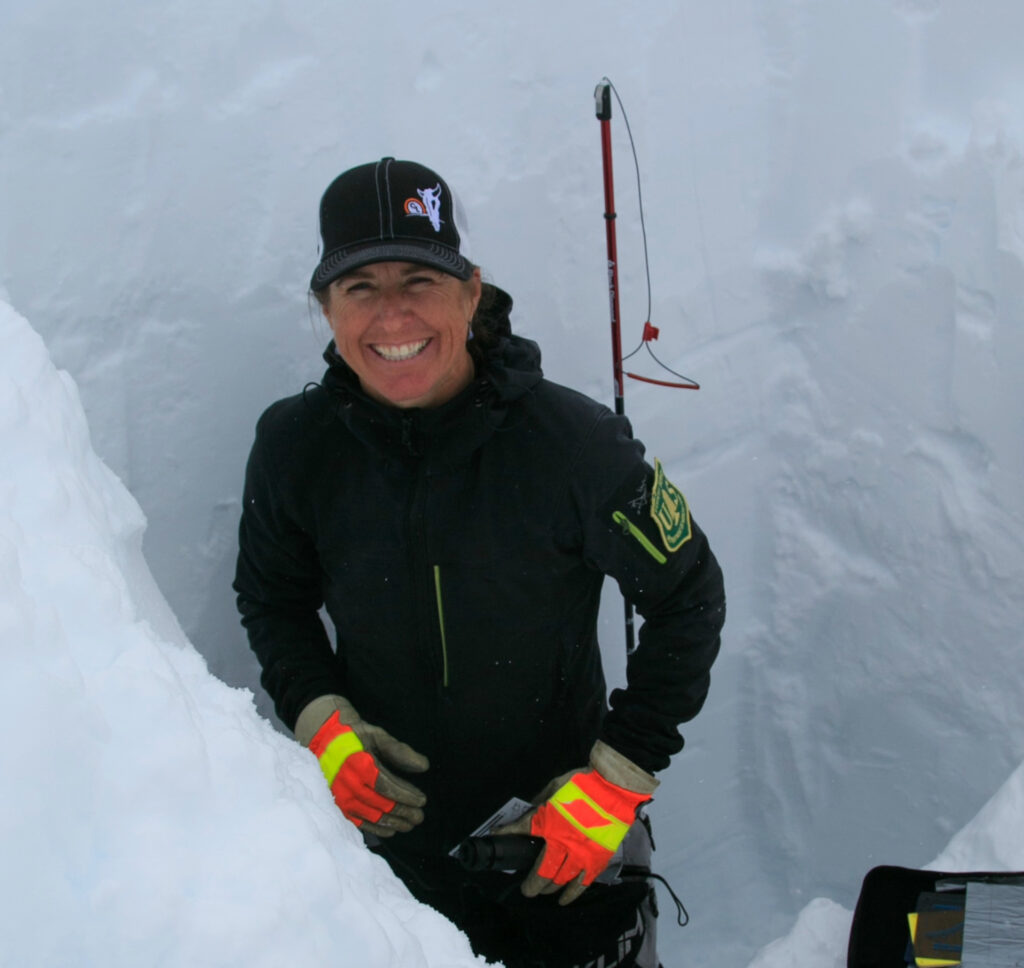
Born and raised in Utah’s Wasatch Mountains, Wendy Wagner has spent much of her life on snow. In her first career, she was a member of the US Nordic Ski Team, and is a two-time Olympian. Multi-talented Wendy also holds a master’s degree in atmospheric sciences, with an emphasis in mountain weather and snow science, from the University of Utah. Her entry into the avalanche world was via the Utah Avalanche Center; she’s been with the CNFAIC since the 2010–11 season. You’ll often find Wendy on a snowmachine.
TAR: What advice would you give your 20-year-old self?
WW: Pay attention and think for yourself.
What was your first job in the avalanche industry? How did you get your start?
I started out as an entry-level forecaster with the Chugach National Forest Avalanche Center. Before that job, I cut my teeth in Utah, where I was fortunate to have the Utah Avalanche Center staff as mentors in countless ways. I was also a graduate student in atmospheric sciences with a focus on snowpack energy balance and metamorphism. Studying snow and avalanches was an all-consuming passion.
Who were your mentors? How did they challenge you?
My first mentor was Drew Hardesty. I don’t believe I would have been able to break into this field without his encouragement, insights, and leadership. Drew facilitated not only learning in the mountains but also in other realms, like teaching basic avalanche awareness. He opened doors that led to other opportunities and mentors to learn from.
Other profound mentors in my life were Brett Kobernik and Jake Hutchinson, who also showed me their styles in the mountains. Brett included me in his near-surface facet monitoring studies and other unique snowpack analysis. All that pushed my understanding of the snowpack. Jake was there to guide me in formulating avalanche forecasts and in my communication style to the public. John Horel, my graduate school advisor, did everything he could to bring a ski bum up to speed in the world of academia. I rely on those skills daily!
What’s the most useful feedback you’ve ever gotten?
The second you think you know something––that’s a sign you don’t.
Describe a time you made a bad decision and got away with it—a time you got lucky. What did you learn?
Well, I can think of a few. One time I was skiing alone on a spring day in the Wasatch when I unintentionally triggered a springtime slab avalanche. It released well above me. I had absolutely no idea I had triggered it until the debris came rolling by me in the gut of the path while I was seeking out the dryer, more fun snow on the edge. I learned that a slightly refrozen surface doesn’t mean it’s not going to avalanche. And also, to pay attention––for real.
Say you’re working in the field, and a colleague you respect proposes taking a run you don’t think is appropriate, given the conditions. How would you respond?
I hope I would ask why they felt like it’s ok to be on or under the slope in question. By simply asking that question, I would hope to generate a discussion that would provide some alternative options for other routes to take.
How would you describe your communication and leadership styles?
I’d say I’m easygoing and approachable. I listen and rely heavily on my staff.
Would you say those traits are typically described as “masculine” or “feminine”?
I have no idea!
How can newcomers to the field build sustainable avalanche careers? Have you done that?
That’s a difficult question, as many avalanche jobs do not compensate to the degree that one can make a decent living. I feel very fortunate to have a permanent avalanche job. My advice is:
- Get a Bachelor’s degree in a physical science, as many higher paying jobs require this
- Develop a very diverse skill set, like: lots of previous time in the mountains managing avalanche issues, mitigation, forecasting, good snowmachine skills if backcountry forecasting, writing and public speaking
- Build relationships and seek mentorship with other professionals in the field
- Pursue interests/projects related to the field that helps grow the field as a whole, like articles, papers, etc.
How do you fuel yourself when you’re not thinking about snow?
Family time! Taking the kids snowmachining, ski touring, commercial fishing on our set-net site on Kodiak Island, mountain biking, doing the dishes, and making dinner.
Check out Part 2 of our series on influential women in the avalanche industry.

